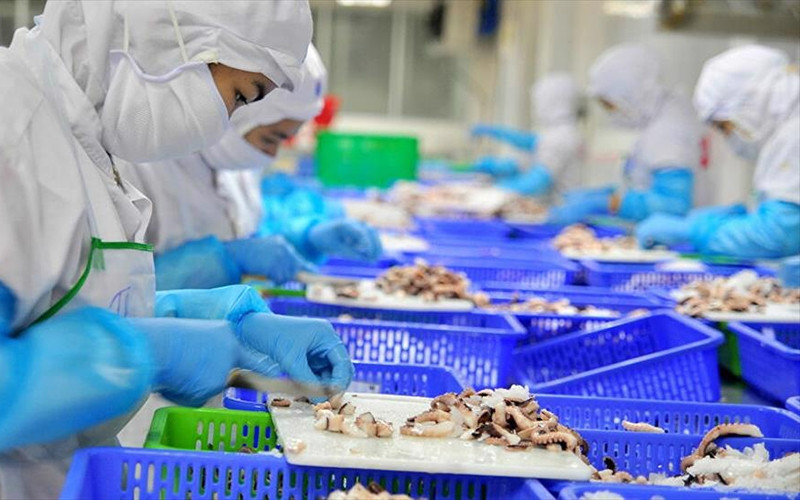According to VASEP, the average rate of COVID-19 vaccination (the first dose) of seafood processing and exporting enterprises is about 40-50%. Of which, Ca Mau is the locality with the highest injection rate.
Through a VASEP survey, enterprises in the Mekong Delta all say that the “3 on-site” production model is only a temporary solution for businesses to maintain production and many seafood factories in the locality have closed as they cannot afford to meet the “3 on-site” model.
Enterprises had to close down due to the incurrence of high costs such as hotel rental, dormitory establishment, accommodations, wages, meals, medical care, COVID-19 testing and others.
Social distancing also results in a lack of workers and makes travel difficult as workers from “green zones” cannot come to work at factories in “red zones”.
Shrimp processing enterprises in Ca Mau, Soc Trang and Bac Lieu, the three leading localities in shrimp production, say that they have had to reduce their processing capacity by 60-70% and the shortage of shrimp material is projected to last until the end of this year or even into 2022.

Tra fish processing enterprises in the Mekong Delta provinces also face common difficulties. (Photo: VASEP)
Meanwhile, tra fish processing enterprises in the Mekong Delta provinces have had to maintain production capacity at only 10-20% while tra fish is becoming oversized or dying out completely due to high density.
Seafood enterprises in Da Nang, Binh Dinh, Phu Yen, Khanh Hoa, Ba Ria – Vung Tau, and Kien Giang have also had to cut down their capacity due to high costs, shortages of workers, and low vaccination rates.
A number of businesses will consider a complete shutdown of their factories if the pandemic is not controlled before September 15 and social distancing measures are prolonged.
















